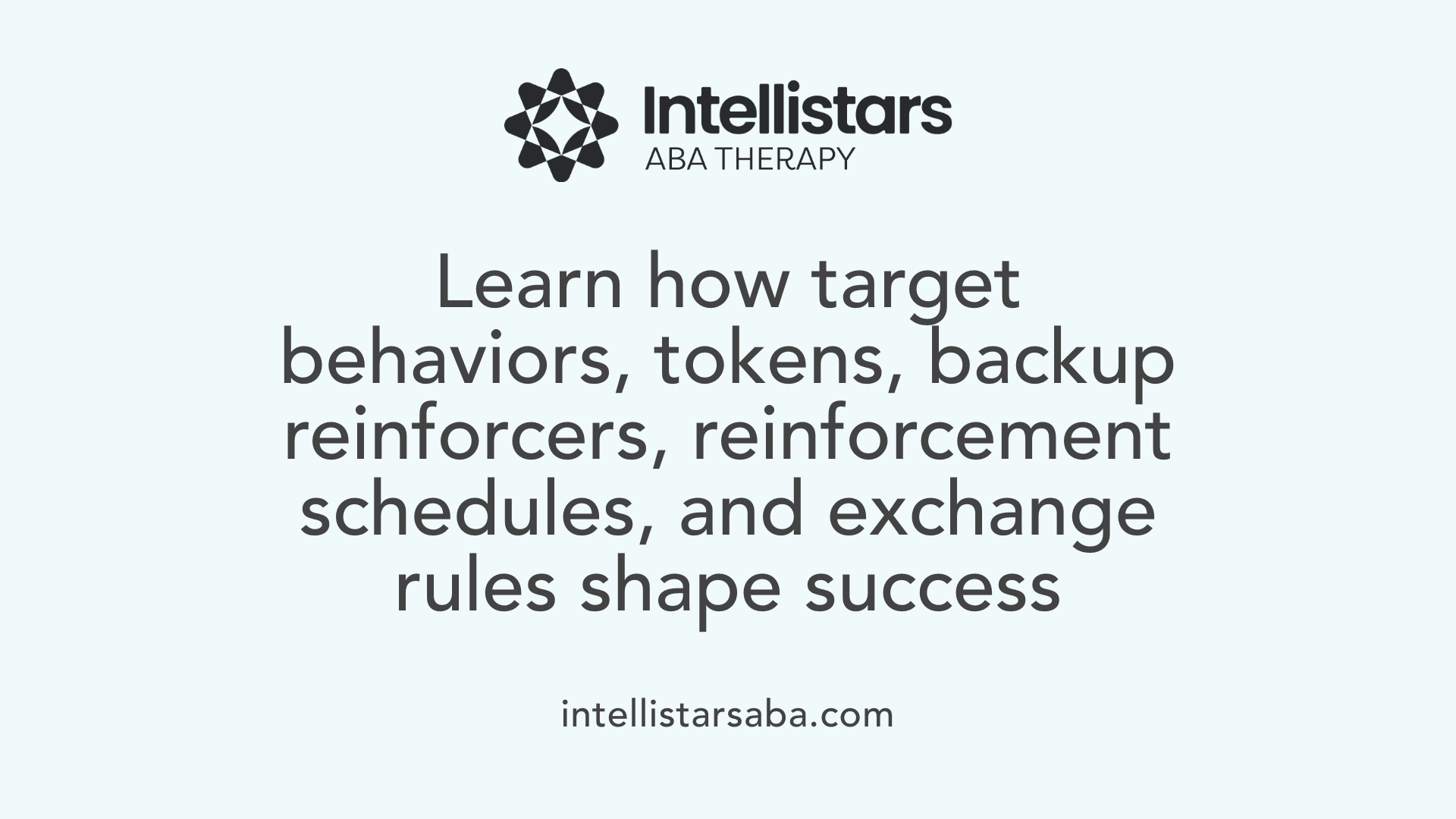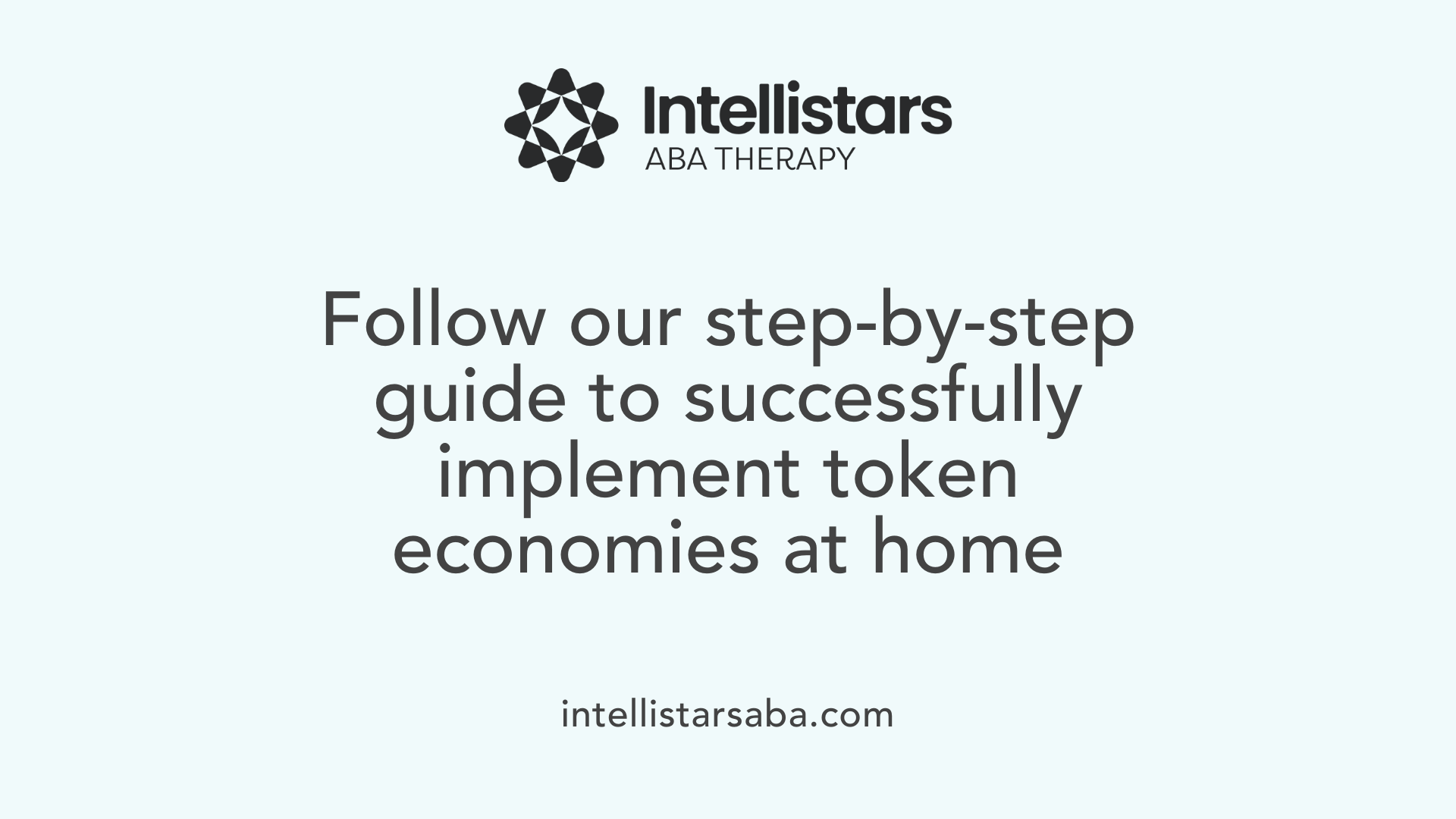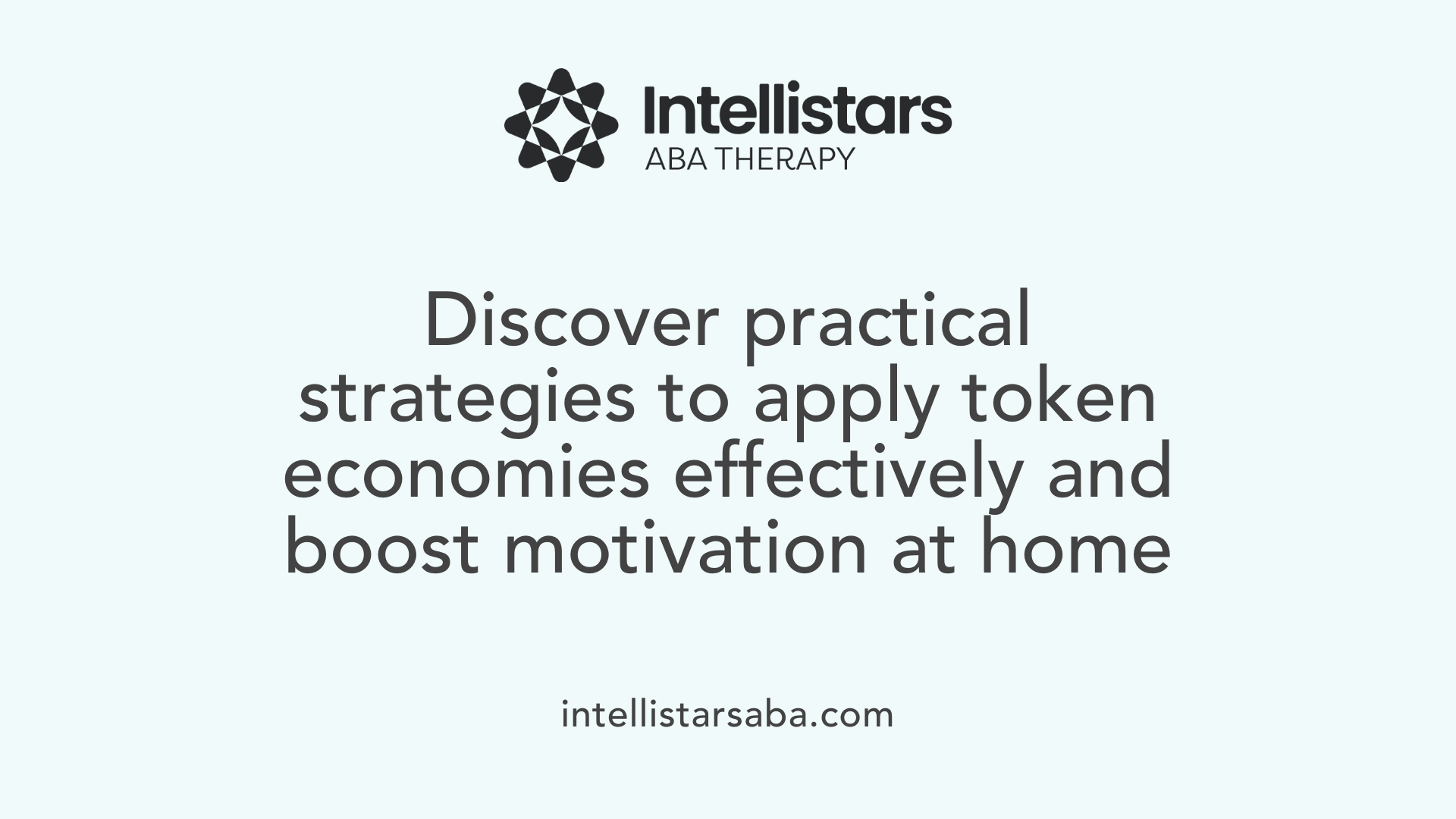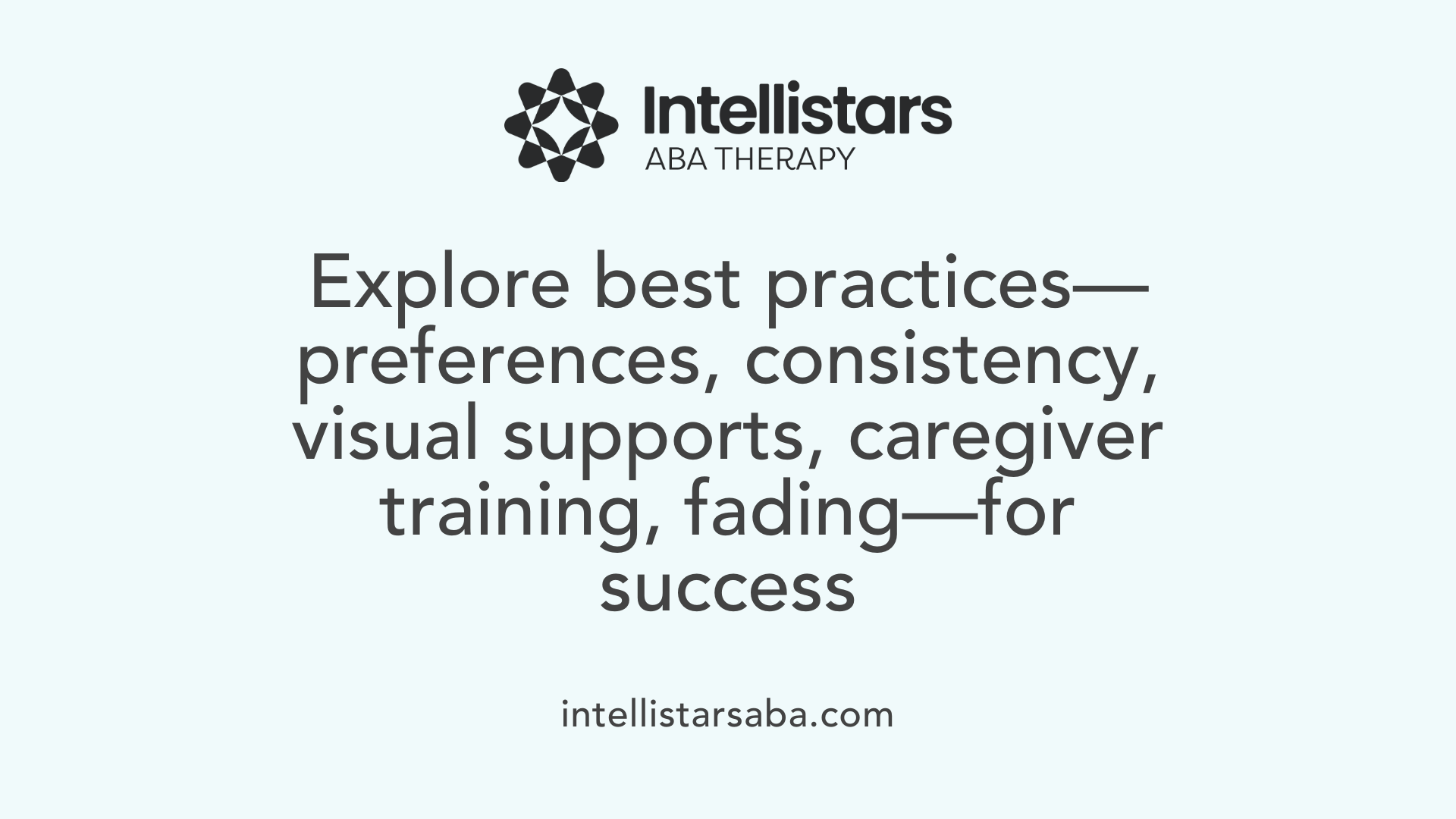Transforming Home-Based ABA Therapy with Reinforcement Strategies
Implementing an effective token economy system at home can significantly enhance the outcomes of ABA therapy for children with autism. This reinforcement approach leverages tangible tokens as conditioned reinforcers, which children can exchange for preferred items or activities, fostering motivation, independence, and skill acquisition. This article explores the components, principles, practical strategies, and best practices for applying token economy systems in a home setting, tailored to meet individual needs and promote lasting behavioral change.
Understanding the Components and Principles of Token Economy Systems

What are the components and principles of token economy systems for home-based ABA therapy?
A token economy system is a structured behavioral reinforcement strategy used widely in ABA therapy, especially effective in home settings. It integrates specific components to promote learning and positive behavioral change.
One of the main elements is clearly defining the target behaviors. These are the specific actions or skills we want the individual to perform, such as completing homework, following instructions, or engaging in social interactions.
Tokens serve as conditioned reinforcers within this system. Examples include stickers, stars, chips, or digital tokens, which act as tangible symbols of reinforcement. These tokens are earned immediately after the individual exhibits the target behaviors, providing instant feedback and motivation.
The backup reinforcers are meaningful rewards that the individual desires, such as extra playtime, a preferred snack, or a special activity. These are exchanged for accumulated tokens according to criteria established beforehand.
A core principle is the reinforcement schedule. This defines how often tokens are awarded and when they can be exchanged. For example, tokens might be received after each desired response (continuous reinforcement) or after a set number of responses (intermittent reinforcement). The schedule is carefully planned to maintain motivation and encourage consistent behavior.
The exchange process includes specific guidelines on how tokens are traded for backup reinforcers. This might involve exchanging a set number of tokens for a larger reward or a smaller reward for fewer tokens. Clear rules help the individual understand what is required to receive their preferred items or activities.
Implementing a token economy at home involves collaboration among caregivers and professionals, ongoing assessment of progress, and adjustments based on the individual's evolving needs. Overall, this system boosts motivation, supports learning, and fosters independence, especially when skills are gradually generalized across different settings.
By combining these components—target behaviors, conditioned reinforcers, backup reinforcers, reinforcement schedules, and exchange procedures—parents and therapists can create a motivating environment that encourages positive behavioral adaptations and skill development for children with autism receiving ABA therapy at home.
Step-by-Step Guide to Implementing Token Economies at Home

How can token economy systems be effectively implemented in home-based ABA therapy?
Implementing a token economy at home involves a structured approach to promote desired behaviors and skill development. The process begins with identifying target behaviors. These should be clear, observable, and meaningful to the individual, such as completing chores, following instructions, or practicing social skills.
Next, choosing appropriate tokens is essential. Tokens can be tangible items like laminated stickers, stars, chips, or digital symbols that appeal to the individual. The selection often depends on personal preferences and the practicality of use within the home setting.
Creating a visual tracking system, such as token boards or charts, helps make the process transparent and motivating. These visual tools display the tokens earned and the progress toward rewards, providing immediate feedback and encouraging repeated engagement.
Establishing a reinforcement schedule involves deciding how often tokens are awarded and when they can be exchanged for backup reinforcers. Typically, initial schedules favor continuous reinforcement (every correct response gets a token), then gradually shift to a thinning schedule to promote independence.
Training caregivers is a vital part of successful implementation. Caregivers should learn how to deliver reinforcement consistently, manage the system, and respond appropriately to behaviors. Proper training ensures fidelity and supports generalization across different settings and people.
Additional tips include conducting preference assessments to identify motivating backup reinforcers, designing a clear exchange process, and setting up routines to maintain routine and predictability.
Regular monitoring of the system’s effectiveness and making adjustments as needed help sustain motivation and achieve long-term benefits. When thoughtfully implemented, token economies can significantly enhance behavior change, skill acquisition, and motivation at home.
Practical Strategies for Effective Application of Token Economies at Home

What practical steps and strategies can be used for applying token economy systems at home?
Implementing a token economy at home can greatly enhance motivation and skill development in children. The process begins with selecting tokens that are appealing and suitable for the child's age, such as stickers, tokens, or digital icons. The next step involves clearly defining the behaviors to reinforce, such as completing homework, following routines, or practicing social skills.
Once behaviors are identified, establish a straightforward system to distribute tokens immediately when the target behavior occurs. Using visual aids like charts, token jars, or boards helps make the process tangible and transparent for the child, fostering understanding and engagement.
Choosing meaningful backup reinforcers is essential; these can include extra playtime, preferred snacks, or special activities. Determine how many tokens are needed for an exchange—starting with a small, attainable number—and gradually increase this as the child's compliance and skill grow.
Involving caregivers or family members is crucial for consistent implementation. Everyone should be trained to follow the same procedures, providing clear instructions and reinforcement to maintain system integrity.
Monitoring the system regularly allows for timely adjustments. Observe whether the targeted behaviors increase and if the reinforcements remain motivating. Over time, plan to fade the tokens gradually, transitioning to more natural or social reinforcements to promote independent behavior.
Overall, consistency, patience, and regular evaluation are the cornerstones of a successful token economy at home, supporting children’s progress across various settings and behaviors.
Best Practices for Success in Home-Based Token Economy Systems

How do individual preferences and motivation impact token economy success?
In home-based ABA therapy, understanding each child's preferences is crucial for designing an effective token economy. Selecting tokens that appeal to the individual—such as stickers, stars, or digital icons—can significantly boost motivation. Conducting preference assessments, which may involve surveys or direct observation, helps identify reinforcers that are highly motivating for the child. When the tokens are meaningful and desirable, children are more likely to engage in targeted behaviors consistently.
What role do consistency and clarity play in procedures?
Consistency and clarity are vital for a functional token system. Establishing clear, straightforward rules for earning tokens and exchanging them for backup reinforcers helps children understand expectations. Caregivers should follow the same procedures daily, immediately delivering tokens after appropriate behaviors. Clear guidelines also include how many tokens are needed for each reward and how exchanges are performed, reducing confusion and promoting skill acquisition.
How can visual supports enhance the effectiveness of token economies?
Visual supports, such as token boards, are essential tools in home settings. These boards visually display the target behaviors and track token progress, providing children with a concrete understanding of their accomplishments. Well-designed, colorful, and age-appropriate token boards help maintain motivation and clarify the connection between their actions and the rewards. Using visual cues simplifies reinforcement procedures, especially for children with communication or cognitive challenges.
Why is caregiver training and data collection important?
Training caregivers on how to implement the token economy systematically ensures fidelity and consistency. Caregivers learn to deliver tokens promptly and follow the reinforcement schedule accurately. Data collection is equally important for monitoring progress; recording the number of tokens earned, behaviors targeted, and the frequency of exchanges allows for informed adjustments. Ongoing training and data analysis help maintain the system's effectiveness and support progress toward individualized goals.
How does the gradual fading of tokens and transition to natural reinforcement work?
As children acquire desired skills, slowly fading the token system encourages independence. This process, known as schedule thinning, involves reducing the frequency of token reinforcement, transitioning to natural reinforcers like social praise or intrinsic enjoyment. Fading continues until tokens are no longer necessary, and the child can perform behaviors without external prompts. This progression promotes lasting behavior change and supports the development of intrinsic motivation.
| Aspect | Best Practice | Details |
|---|---|---|
| Preferences | Conduct assessments | Use surveys, observations to identify motivating reinforcers |
| Procedures | Maintain consistency | Follow the same rules daily and in all settings |
| Visual Supports | Use token boards | Design engaging visual tools suited to the child's developmental level |
| Caregiver Training | Provide ongoing training | Teach implementation strategies and data collection methods |
| Fading | Gradually reduce tokens | Transition to natural reinforcement as skills are mastered |
What are the effective strategies for implementing a token economy at home?
Effective home-based implementation involves initial steps such as identifying specific target behaviors, selecting motivating tokens, creating a reinforcement menu with preferred rewards, and establishing a reinforcement schedule. Introducing the system should be gradual, with caregiver modeling and practice. Consistent data collection and periodic review help optimize the system, while mindful fading ensures the child's skills are maintained independently.
Research consistently supports that well-planned token economies increase task completion and desirable behavior. When tailored to the child's interests and clearly structured, these systems foster skill development across academic, social, and communication domains. With thoughtful implementation and ongoing management, token economies serve as powerful tools to motivate children and reinforce positive behaviors in home settings.
Harnessing the Power of Token Economies for Behavioral Success
Applying token economy systems effectively in home-based ABA therapy requires careful planning, consistency, and responsiveness. By clearly defining target behaviors, choosing motivating tokens and backup reinforcers, and establishing structured reinforcement and exchange procedures, caregivers can create a motivating environment that promotes skill development and behavioral improvements. Visual supports, caregiver training, and ongoing monitoring are crucial elements that ensure the system’s success and sustainability. When thoughtfully implemented and gradually faded, token economies serve as powerful tools to reinforce positive behaviors, foster independence, and support long-term success for children with autism in their natural environments.
References
- Token Economy: Examples and Applications in ABA
- How Token Economy Systems Empower Growth in ABA Therapy
- How to Implement & Use Token Boards - How to ABA
- What is a Token Economy System? | PACE
- Common Practices used to Establish and Implement Token ...
- The Power of Token Economies - How to ABA
- How to Implement a Token Economy in ABA Therapy
- Common Practices used to Establish and Implement Token ...
- Token Economy ABA – Systems & Uses in Therapy - CentralReach
- Token Economies: How to Use Them Effectively in ABA






